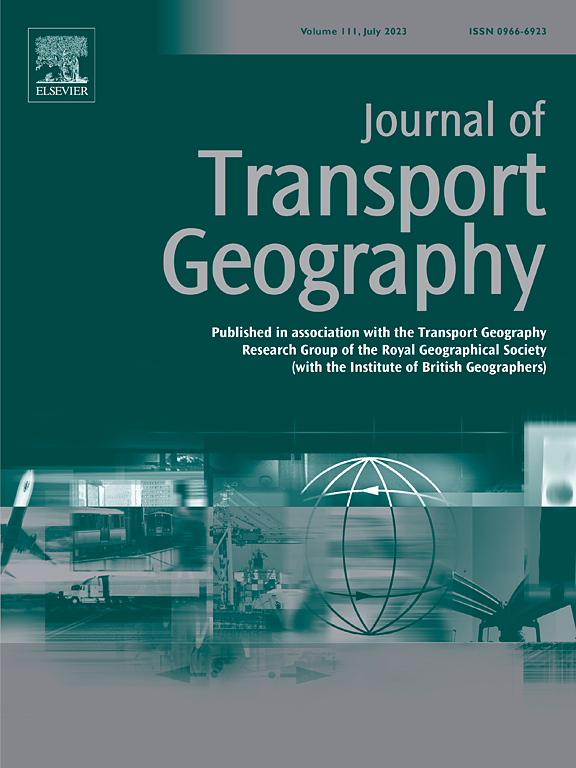Optimal location of free-floating bike-sharing dispatching hubs: A multi-scale perspective
IF 5.7
2区 工程技术
Q1 ECONOMICS
引用次数: 0
Abstract
Free-floating bike-sharing (FFBS for short) dispatching, the process by which operators redistribute shared bikes, is essential to satisfy FFBS demand and alleviate the “tidal phenomenon” of the FFBS system. However, the efficient formulation of dispatching strategies for FFBS systems is usually constrained by factors such as the spatial extent of the dispatching region and the length of the scheduling path. In this study, we propose an FFBS dispatching hub siting framework from a multi-scale geographic view, to provide more refined spatial units for developing FFBS dispatching strategies. More concretely, firstly, on a macro-scale, the entire study area is divided into multiple cycling communities (i.e., FFBS management sub-regions) with closer internal connections. Secondly, a hybrid spatial clustering method is developed to identify FFBS virtual stations with a certain service radius at the micro-scale. Finally, exploiting the location-allocation model, we optimize the siting of FFBS dispatching hubs within each management sub-region to maximize the coverage of virtual stations and FFBS demand within their catchment area (meso-scale). The feasibility of the proposed framework is empirically investigated using the FFBS system in Nanjing, China as a case study. The resulted dispatching hubs for each management sub-region unveil that 50 dispatching hubs selected from 147 urban rail transit stations can cumulatively cover 70.10 % of the number of virtual stations and 87.52 % of the FFBS demand within their catchment area (3000 m). Our findings could help stakeholders improve the efficiency of dispatching schemes, thereby providing more rational and targeted decisions for reducing the dispatching path length and increasing the bike turnover rate.
自由浮动共享单车调度枢纽的最优选址:多尺度视角
自由浮动共享单车(Free-floating bike-sharing,简称FFBS)调度是运营商重新分配共享单车的过程,是满足FFBS需求和缓解FFBS系统“潮汐现象”的关键。然而,FFBS系统调度策略的有效制定通常受到调度区域空间范围和调度路径长度等因素的制约。本研究从多尺度的地理视角提出了FFBS调度枢纽选址框架,为制定FFBS调度策略提供更精细的空间单元。更具体地说,首先,在宏观上,整个研究区被划分为多个内部联系更紧密的骑行社区(即FFBS管理子区域)。其次,提出了一种混合空间聚类方法,在微尺度上识别具有一定服务半径的FFBS虚拟站;最后,利用位置-分配模型,优化每个管理子区域内的FFBS调度中心的选址,以最大化虚拟站的覆盖范围和FFBS在其集水区内的需求(中尺度)。本文以南京市FFBS系统为例,对该框架的可行性进行了实证研究。结果表明,从147个城市轨道交通站点中选择的50个调度中心,可累计覆盖其集水区(3000 m)内虚拟站点数量的70.10%和FFBS需求的87.52%。我们的研究结果可以帮助利益相关者提高调度方案的效率,从而为减少调度路径长度和提高自行车周转率提供更合理和有针对性的决策。
本文章由计算机程序翻译,如有差异,请以英文原文为准。
求助全文
约1分钟内获得全文
求助全文
来源期刊

Journal of Transport Geography
Multiple-
CiteScore
11.50
自引率
11.50%
发文量
197
期刊介绍:
A major resurgence has occurred in transport geography in the wake of political and policy changes, huge transport infrastructure projects and responses to urban traffic congestion. The Journal of Transport Geography provides a central focus for developments in this rapidly expanding sub-discipline.
 求助内容:
求助内容: 应助结果提醒方式:
应助结果提醒方式:


